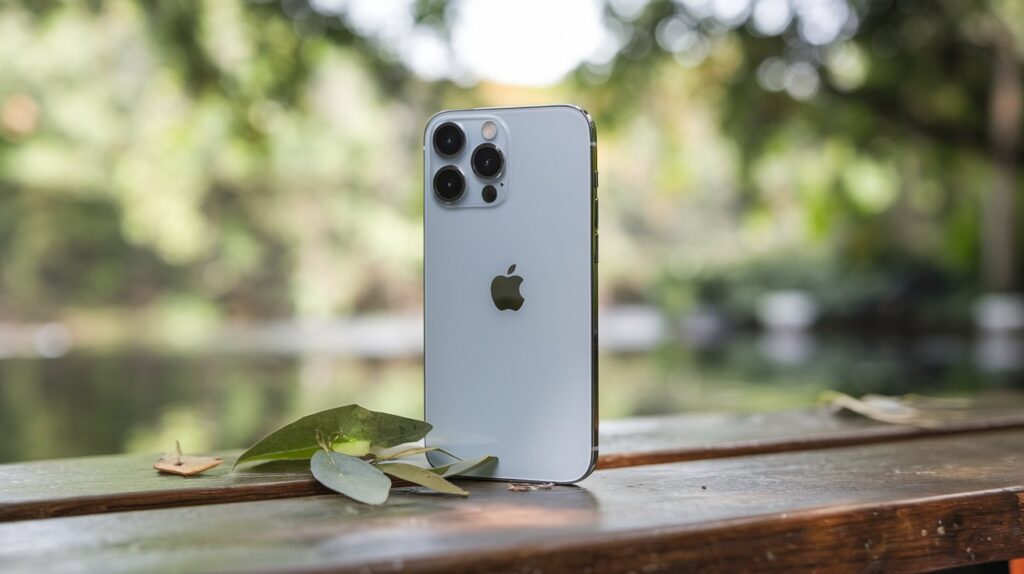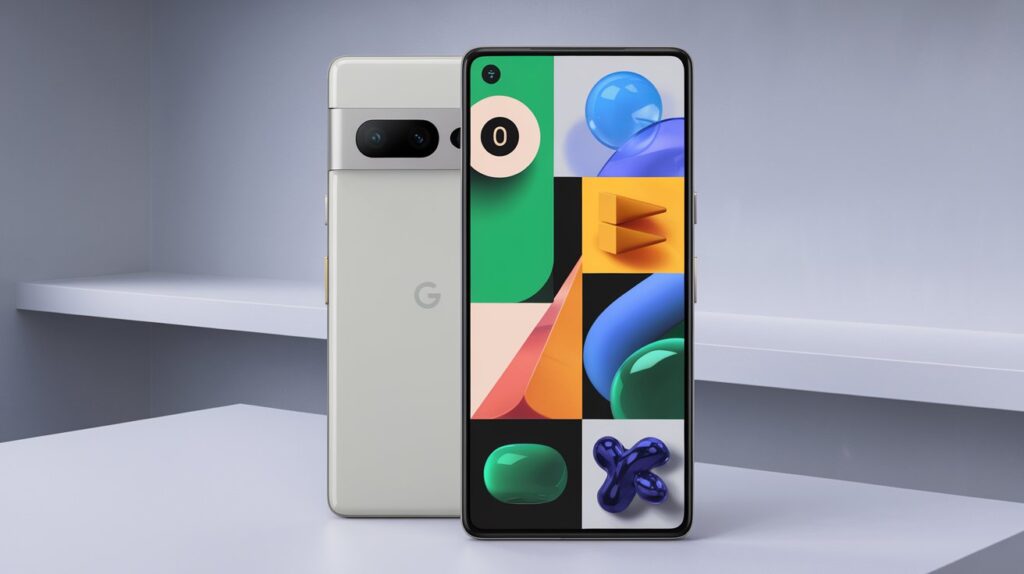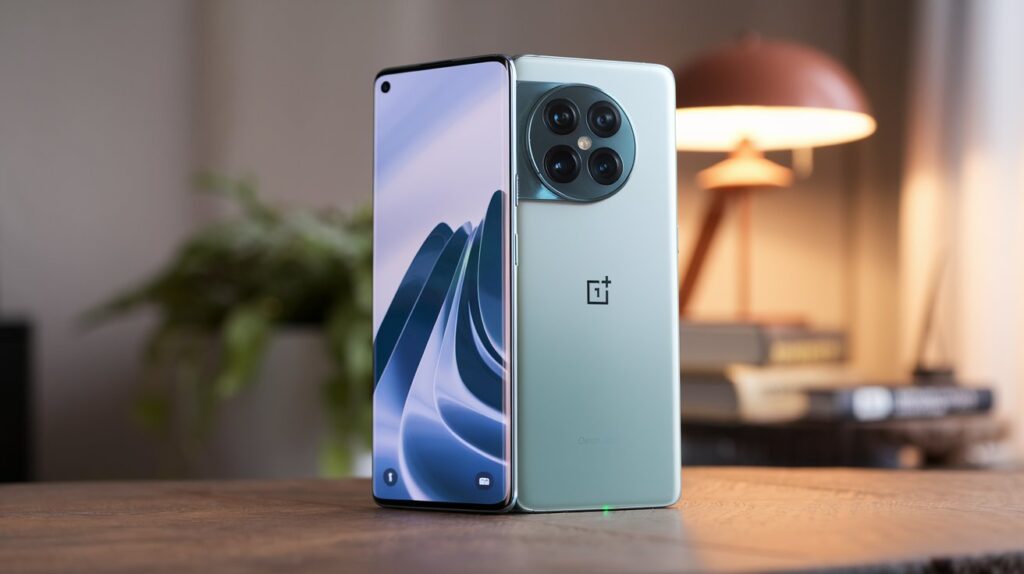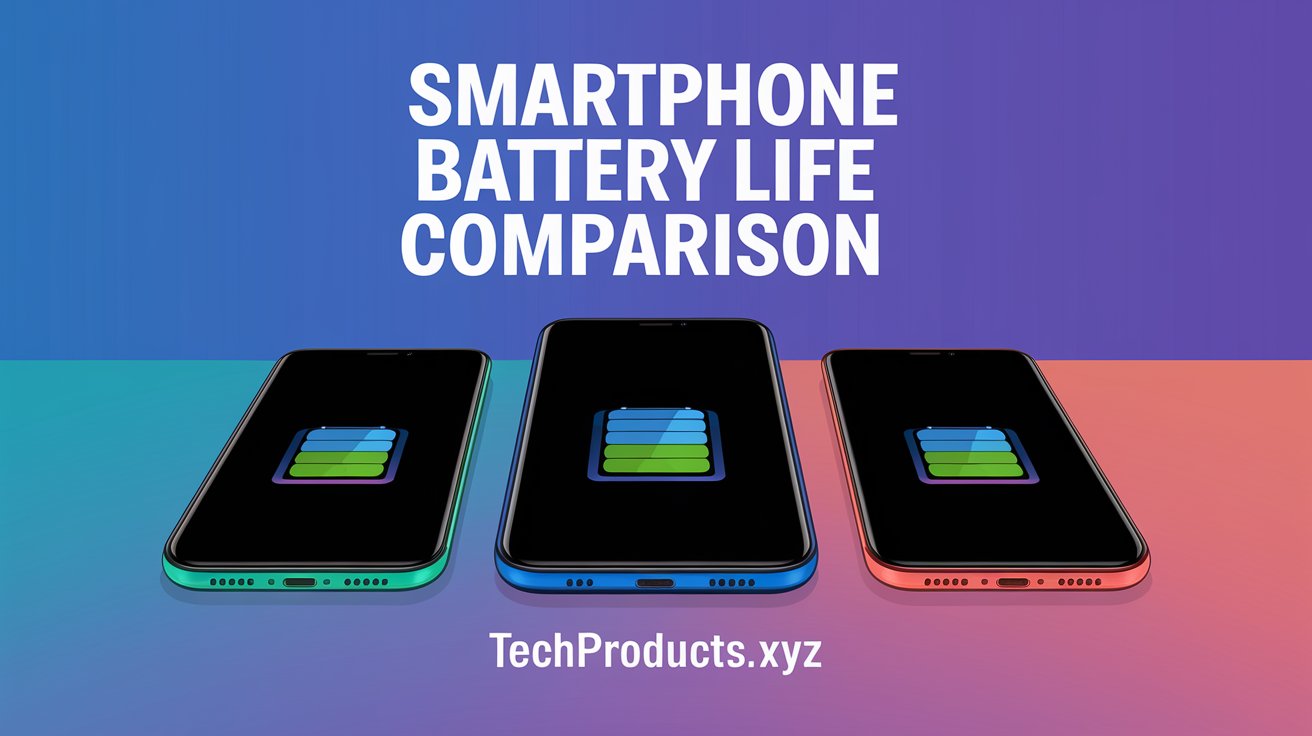One among the most important determinants of choice for a smartphone will certainly be the life of the battery. This will immediately mean that one can continue using his gadget without confinement to a charger, especially for those whose phones become indispensable in aspects of work, entertainment, or even communication purposes. Definitely, high-end smartphones have to integrate the performance of the battery as a result of relentless fast technological development and continually rising demands for the completion of more applications.
We now discuss the current situation in terms of batteries on smartphones compared to a number of the more commonly used batteries by some of the newer smartphone offerings that hit the market in 2024. We briefly mention aspects which determine the energy efficiency and battery life on your smartphone and answer some of the most commonly asked questions about smartphone batteries. By the end of this comprehensive review, you will be much better equipped with knowledge on which phone takes the lead in battery performance, and hence which one you would make a better choice for your needs.
Table of Contents
1. Smartphone Battery Basics
Now a days ,smartphones are all about battery life. While you will be reading about specific models, it is helpful first to know some general concepts about smartphones’ batteries and what affects their performance .
a. Battery Capacity (mAh)
Capability: measured in milliampere-hours, mAh. The number tells you how much energy the battery can store. Generally speaking the more mAh the more time your phone will stay functional with one charge, but do not think that this is where the use life of a smartphone begins and ends; other things enter this playing field.
b. Type of Battery
Most commercial, modern cell phones use Li-ion or Li-Po batteries. High energy density has basically been the main requirement in supplying power for an extended period from a compact package. Chemistry and packaging are different, naturally, but both are efficient and rugged with rechargeability.
c. Display and Power Consumption
Actually, size and resolution of the screen of a phone contribute much to battery life. Indeed, high-resolution large screens, especially OLED and AMOLED require considerable power especially when put on high brightness modes; while small-sized screens or low resolution devices seem to save more energy.
d. Processor Efficiency
Another humongous player that is reflective of a percentage in the calculation of the life of the battery of your phone is your processor, or rather your chipset. Much the same as above, newer chips, such as Qualcomm’s Snapdragon or A-series by Apple, are also implemented into these performance versus energy usage optimization ideas. Newer chipsets usually bring out the energy-saving features, therefore they also add to a longer overall battery life as well.
e. Low-level optimizations
Since most of the software optimizations are already coded in them-in the case of Android and iOS already features native power-saving modes, app management capabilities, and limits the number of apps that can run in tandem in the background-this obviously increases your phone’s battery life even further. However, most of the smartphone manufacturers design these systems keeping this very purpose in mind: fine-tuning energy consumption.
________________________________________
2. Long-lasting Battery Life Phones in 2024
Zooming in some of the handsets that by all means, will make 2024 and their respective battery life. The handsets below for this review were tested on real usage scenarios benchmark tests as well as took the standby times with total stand-by life after just one charge.
a. iPhone 15 Pro Max
• Gü wicked Capacity: 4,400 mAh
• Processor: A18 Bionic chip
Super Retina XDR OLED, 6.7 inches, 120Hz
Up to 28 hours
Up to 50 percent charge in 30 minutes
Up to 80 percent charge in an hour with 20W charger
Wireless: MagSafe
Apple iPhone 15 Pro Max is running on the most efficient battery system in the year 2024. Now, with A18 Bionic chip, it optimizes to as much as what the user consumes energy for, especially with gaming activity or video editing and multitasking. At such size with optimization of OS through iOS 17, heavy users run out much later.

b. Samsung Galaxy S24 Ultra
Unique Features:
• Battery Capacity: 5,500 mAh
• Chipset: Qualcomm Snapdragon 8 Gen 3
• Display: Dynamic AMOLED 2X, 120Hz on 6.8″
• Mixed usage up to 30 hours
• Fast Charging: 65W, 50% in 20 minutes
• Wireless charging: Yes, 30W wireless
The Galaxy S24 Ultra features a massive 5,500mAh battery which makes the device’s long battery life reach literally into a whole day of heavy usage. Optimized by Samsung in tandem with a power-sipping Snapdragon 8 Gen 3, it helped ensure the device maintained its preservation of the battery for the more power-intensive activity-gaming as well as utilization of 5G
c. Google Pixel 8 Pro
Capacity: 5,050 mAh
• Chip: Google Tensor G3
• Screen: 6.7″ LTPO OLED; 120Hz
• Combined usage time: ~27hr
• Fast Charging: Up to 30W wired, charging up to 50% of battery in about 30 minutes, wireless up to 23W
This is the Google Pixel 8 Pro if not the cream itself – crème of the crop. With a new Tensor G3 processor and sensible, efficient battery-saving features from Android 14, one is assured that runtime on the Pixel 8 Pro is going to be seamless even when streaming actively or when mobile photography applications are used.

d. OnePlus 12 Pro
• Battery Life: 5,100 mAh
• Processor: Snapdragon 8 Gen 3
• Display: 6.7-inches AMOLED; 120Hz
• Battery Life: As long as you can go without recharging according to how you use this phone.
• Fast Charging: 100W Wired You will take less than 25 minutes to fill this device from 0% all the way to full charge.
• Wireless Charging: Yes; wireless charging at 50W
The OnePlus 12 Pro can’t just sit idle as the company proclaims the start of a new generation of battery technology. It fits in your pocket, snaps the juice in just a super-fast charging set-up, all the way up to 100W, and tucks it in with a giant battery of 5,100 mAh that will get you through an entire day of pretty intense usage. Besides that, the OxygenOS of OnePlus has also undergone updated that now even more supports the power intake in dealing with the power utilization in background application management.

e. Xiaomi 14 Pro
Battery Capacity: 5,200 mAh
Processor: Qualcomm Snapdragon 8 Gen 3
Display: 6.73 inches; AMOLED
Combined usage: Up to 32 hours
Fast charging: up to as much as 120W; The wireless charging will charge the battery up to 100 percent in 15 minutes
Wireless charging: yes; up to 50W.
Xiami 14 Pro is one of the flagships that will last as long as possible with regard to battery life during 2024. For with moderate usage, the performance runs for up to two days in duration because it already has a 5,200 mAh battery and Xiaomi’s 120W fast charging. It is perfect for a person who wants a long lasting battery phone but charges very fast.
3. Factors of Smartphone Battery Life
Of course, the battery capacity matters much, but there is much more to inform you about how long your smartphone can survive on a single charge. And here are the most relevant factors
a. Screen Brightness and Refresh Rate
More recent, this screen is high and bright but has shorter battery life as well compared to a higher refresh rate up to 120Hz. A savior in saving power, more recent phones have an adaptive refresh rate which adjusts automatically with respect to the content.
b. 5G Connectivity
5G should provide battery life that is at least twice as long as the 4G model in weak-signal areas. Frankly, every new generation smartphone robs a little bit of its battery life-and attaching a 5G device has traded that way off in battery life.
c.Apps
Some will gobble up your battery, including apps that may be running and employ the location. Applications like games or video streaming apps and apps in social media, for instance, Instagram and Tik Tok, are pretty awful at taking care of the battery. d. Background Processes and Notifications
The more activities one has running in the background of his mobile, the more power one will consume. He also can let him know of his notifications he may have, which limits to use at the background and off applications you never use.
Sometimes, you get much better power management through an upgrade as upgrades do come with some revisions and other optimizations for even better performance within the battery.
4. How to Keep the Alive Your Smartphone’s Battery
If you want to charge your battery of your smartphone, here are some reminders that you ought to memorize.
• Dim the brightness of your smartphone, thereby putting it on an adaptive brightness mode where it will dim at certain times.
• Activate the power-saving modes anytime you would like to save the life of your battery.
• If your network is weak then, perhaps you should turn off 5G, or if it’s something you do not need to be on, or use constantly then perhaps best to turn it off.
• Quit Apps you no longer need them as they are running in the back ground.
• Password: If you can, then use a lock, if you can not then use a password.
• Permit location services only when you would not need to use applications that rely on these
• Put on airplane mode if you want to see connectivity
• Minimize the number of notifications from apps that will make you jump Tests of Battery Life: How They Work Screen-On Time vs. Standby Time
Tests generally find its screen activity in terms of how long the device is going to last on in standby time. “Standby time” is what this measurement is called, and it gives some kind of indication to the user as to how long the cell phone is going to last without actual use. Two counts are quite effective at portraying very relevant information into real-world performance; however, screen-on time provides a more practical understanding in terms of usage.
Gaming and Battery Drain
Extreme gaming most likely is the no. 1 battery-killer enabler associated with carrying a cell phone. Those high-resolution graphics applications consume so much from the processor as well as from the display; thus they cut the lifetime of a battery more than the lighter activities such as browsing or texting.
Streaming, Browsing and the Effects on the Battery Life
Video or internet surfing via Wi-Fi or cellular networks also defines it. Although streaming in high definition has put enormous loads on the battery, it is not as bad as when one goes gaming.
Fast Charging vs. Durable Battery
Science Behind Fast Charging
Fast chargers – Qualcomm Quick Charge or that utilizes Power Delivery via USB – revolutionised everything related to the charging of our cellphones. Savoured hours that otherwise may go wasted in waiting while the batteries came up charging. All of that’s paid for in maybe a shorter lifetime of the battery overall due to increased charging temperatures.
Do Fast Chargers Over Time Degradate Battery Lifespan?
The only drawback of a fast charge is that it would slowly deteriorate the battery. Although the batteries these days are designed to have fast charging, this would just hasten its deterioration if the cycle is greatly repeated. However, it is minimal when cared for properly.
5. FAQs
Q1: Does fast charge deteriorate the battery?
Fortunately, fast charging is very innocuous and simply mildly impacts the lifetime of a battery. This is purely what should be expected from the normal recharging of any phone at high wattage and will be expected to generate heat and thereby speed up degradation over time. He should then use it only when absolutely necessary and not recharge his phone overnight with a fast charger.
Q2: When do I know my smartphone battery degrades?
For instance, it’s simply not delivering on even the most basic requirement: battery life. Here, you have something particularly glaring: it doesn’t have extremely low battery life. That gadget which, not too long ago, would carry you through work and maybe a few hours of play on the same charge now keeps finding you scrambling for a source of power long before your shift is over. Simply put, it can be tested without calibration by tapping a built-in battery health measure found in some settings menus on some iPhones and on certain Android versions; if not, perhaps it is already time to have your battery replaced.
Q3: How many times should I charge my smartphone?
Well, actually, there isn’t any real rule about how many times you can charge a cell phone. Still, in the real world it usually makes sense to keep your battery between 20 and 80 percent. And yet you shouldn’t let a fully depleted battery drop all the way down to 0 percent because that will wear the battery out too soon. But topping up constantly to 100 percent will still degrade the battery however. Top-ups will also appear during the day, if possible, and will push the battery life even beyond your expectation.
Q4: Do I need to charge my cell phone at night?
Clever design has been employed in the new handsets so that the charging of the battery should never rise to 100%. That said, there is no excuse for you to keep your device under the charger overnight. The phone becomes hot, and that does it in for far too long on the battery part. Remove it or as with some of the higher-end variants, switch off the charger or timeout charge at night.
Q5: Is the background app a battery life consumer?
Yes, it is a hungry background applications energy eater. Worse examples go to backup contents of your cell phone and forever keeping one’s user location. Look to your phone settings for battery usage, find the application that goes wasting more energy and limit their activities in the background or close them.
Q6. How would a degradation of its health affect the performance of a battery?
All newer smart phones, including an Apple iPhone, will at least nudge you in a general way that it is the cell’s battery life which determines just how fast your phone will run. Once that battery life deteriorates to a point, your phone will start to slow down so that it doesn’t turn off in an unanticipatory way. You can access battery health to give you an idea whether it’s time to replace the battery or even change performance settings.
Q7: Does dark mode save the battery of a smartphone?
Of course. This also consumes some less energy since in OLED/AMOLED, every pixel lights itself and therefore, if the pixel needs to write black, then it does not light itself up and thus consumes some less energy, again. The users that spend their hours just browsing or those apps with white backgrounds will feel it.
Q8: Can I charge my cell phone even when I am using it?
It is perfect but don’t do whatever you can’t let the phone stay as it recharges. You would most probably increase the temperatures, and that puts at risk the life-span of the battery due to the heat. Avoid breaking and wearing out in the device. It will be prudently exercised the gadget strictly on gaming and movie streaming when the charging is faster.
6. Conclusion
The minimum a user would require from the battery life of a mobile phone is availability hand to hand during the day for any type of work, entertainment, or communication. New smartphone models for 2024, which appear this year, set some new standards for iPhone 15 Pro Max and Samsung Galaxy S24 Ultra, up to Xiaomi 14 Pro, with a capacity of 4,400 mAh up to more than 5,500 mAh. In short, these smartphones feature really wonderful spans of their batteries. Good stuff – efficient processors and rather more optimized software.
For instance, when that comparison of the battery capacity saves that smartphone, then it nullifies every other feature, including the processor efficiency, screen technology, and many more. For the fact remains that those factors truly determine what really is real-life battery usage. Fast-charging functionality also becomes one of the necessary selling points wherein the user can fill up his or her battery quickly whenever he or she needs to.
Improvement in the battery of a smartphone has become rather crucial even though it is progressing at a rapid pace. Easy habits like reducing the brightness of a screen, controlling the background apps, and saving power modes make it worthwhile. It will also benefit by maximizing phone life for a very long period if one learns how 5G impacts the performance of the battery or usage of apps based on temperature conditions.
All such facts could have been covered just by staying updated with the latest advanced smartphones available in markets so that one would be able to utilize his or her product requirements as well about long-lasting batteries, fast performance, and rich user experience. It does, whether it is the power all day long by a power user who uses high-end, or another who needs juice to charge up their phone faster for getting their smartphone charged quicker, do go a long way in ensuring that they have enough juice left in the tanks to get through most parts of your day.


1 thought on “Smartphone Battery Life Comparison: a comprehensive guide”